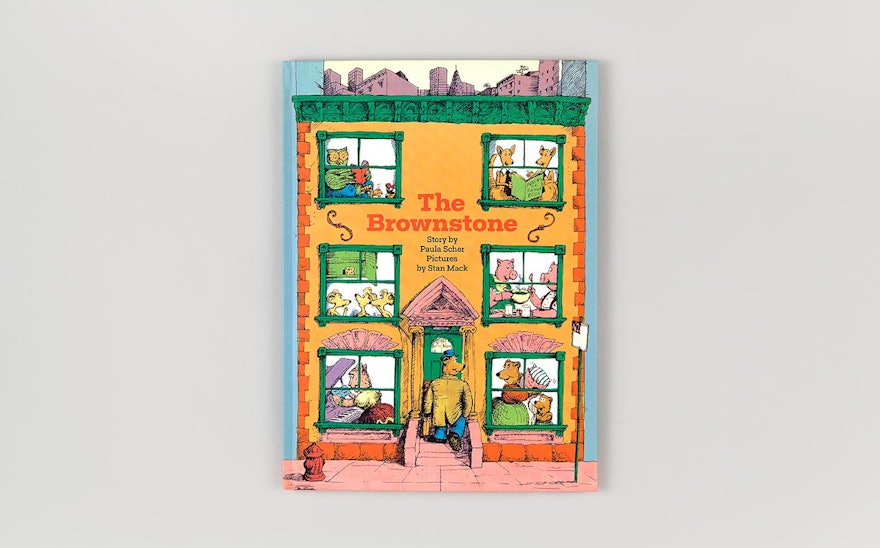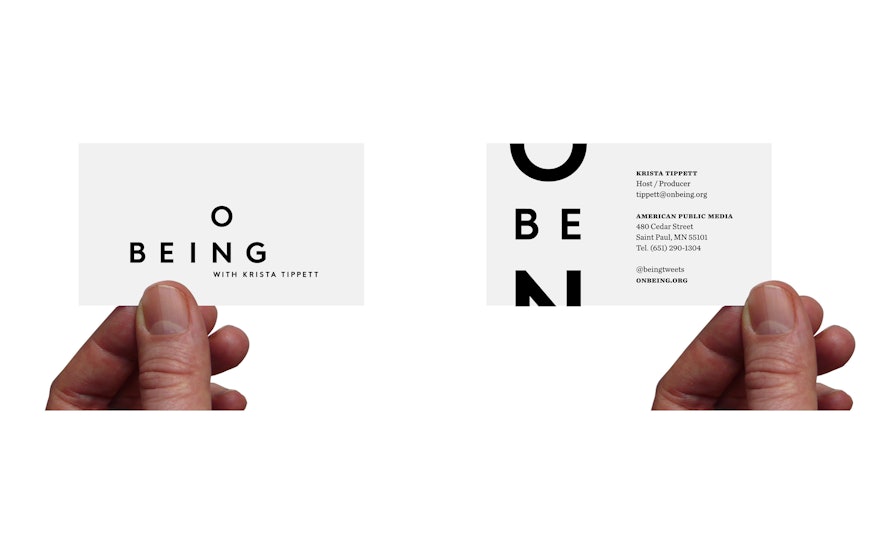In 1970, just out of art school and newly arrived in New York City, Pentagram’s Paula Scher wrote The Brownstone, her first and only children’s book. Published by Pantheon in 1973, the picture book tells the humorous story of six different animal neighbors who must learn to live together in the cramped quarters of an apartment building, vividly illustrated in a series of colorful drawings by the celebrated illustrator and cartoonist Stan Mack. The book has just been reissued in a handsome new edition from Princeton Architectural Press.
Living in harmony with neighbors is tough, and it’s especially difficult if you’re a bear in a New York City brownstone, trying to hibernate. Who can sleep through the Kangaroo’s tap dancing, or Miss Cat’s caterwauling? The Brownstone shows children how the animals (and people) can work together to overcome their differences and peacefully co-exist. In the book, the building’s landlord, Mr. Owl, suggests the noisy animals relocate to different apartments to find the perfect fit. The design of the book is like a puzzle, with the moves illustrated in a cross-section of the building. The “charming, timeless story becomes a hugely entertaining brain teaser,” The New York Times Book Review recently noted in a look at the new edition.
Scher considers the book the first project she fully designed. She studied illustration at the Tyler School of Art in Philadelphia and initially wanted to be a children’s book illustrator. While working at an early design job at Doubleday in New York, she asked an editor for advice and the editor told her that if she wanted to be a children’s book illustrator, she should write a children’s book. Perhaps inspired by her own experience in the city—where she had already moved six times in two years, as young arrivals tend to do—Scher quickly had the idea for the story.
The editor at Doubleday liked the story but lost Scher’s original text and illustrations, not unheard of in the days before computers. Six months later, Scher was working at Random House and shared her children’s book idea with her colleague Stan Mack, who regularly dropped by her cubicle in the back room to smoke. He said “Let me illustrate it, and I’ll sell it for you.” Scher drew diagrams about how the animals moved through the sections of the building. Mack took these to the editor at Pantheon, who bought it on the spot.
The book was an out-of-the-box success, praised by Kirkus for its “comic bookish humor” and selected by the Literary Guild for its monthly book club. (“Imagine my thrill at seeing Gene Shalit review my first book on The Today Show,” Scher says.) The book became a mainstay of children’s libraries and was in print in various editions for over 25 years. By the time it was published in 1973, Scher was working in the advertising department at CBS Records, where she would eventually become Art Director and collaborate with Mack again on an album cover for Eugene Normandy’s Peter and the Wolf. Scher believes the appeal of The Brownstone lies in the lively illustrations by Mack. “It was made for Stan,” says Scher. “He’s brilliant at characterizing people, and here he got to do it with animals. The pig at the fridge is one of my all-time favorite drawings. The starving mice are so pathetic.”
Scher’s books Make It Bigger and MAPS were both published by Princeton Architectural Press, and the publisher expressed interest in revisiting The Brownstone as they began an effort to resurrect out-of-print titles by design masters. The new edition gave Scher the opportunity to reconnect with Mack after 20 years, and both were thrilled to share the story with a new generation of children. The reproduced book looks better than the original; Scher reset the type, and PAP’s Rob Shaeffer reedited the text.
“I love seeing something I created 40 years ago find a new life,” says Scher, who thinks the book will find a new audience in the young parents and families who are once again making urban areas like Brooklyn home. The book’s diagrammatic concept precipitated some of Scher’s future design thinking in areas like environmental graphics and data visualization, but otherwise exists on its own outside her body of work.
“I never had another idea for a children’s book, and I never will,” she says.

